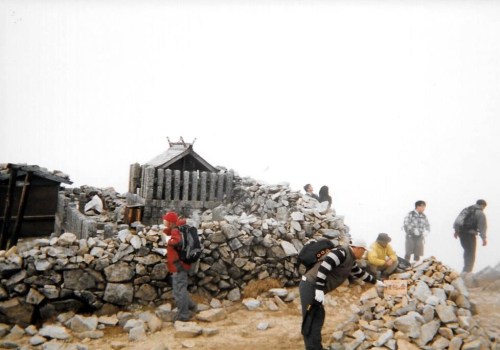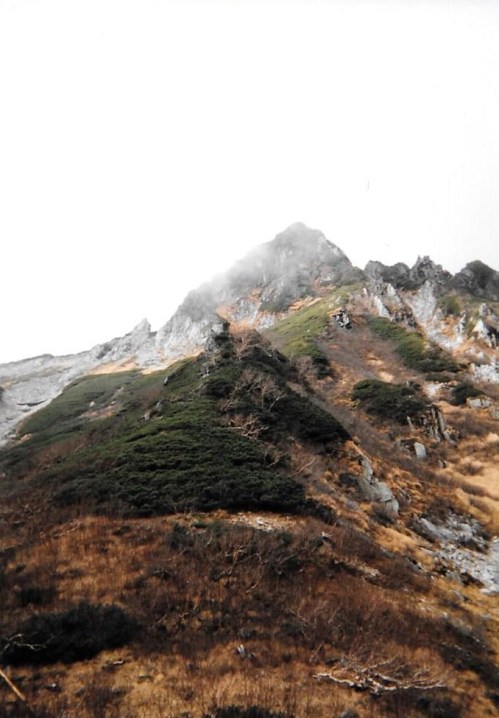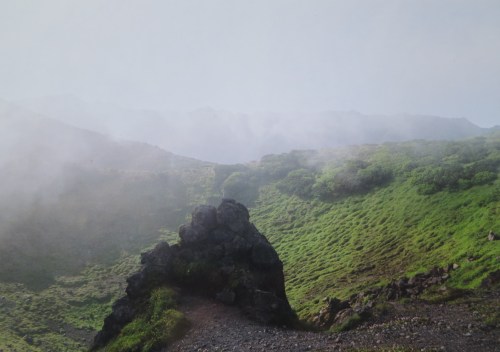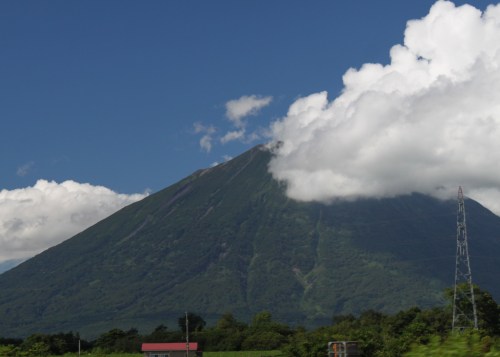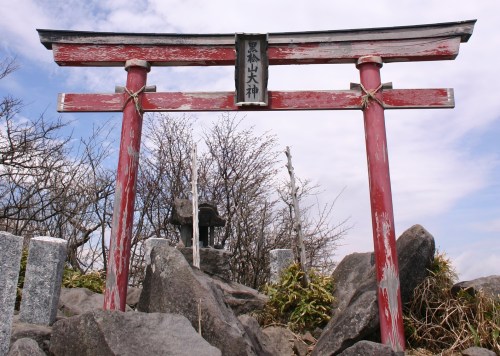The next morning, after a bowl of warm oatmeal, I set off into a torrent of gray mist and howling winds. The lower pressure system’s grip on the mountain refused to budge. I crawled up along the loose rock of the ridge, around pockets of brush pine, carefully stepping over the bellflowers and avens, serenaded by the cries of ptarmigan hopping among the dew-stained rocks. I reached the summit after laboriously picking my way along the saber-toothed ridge, resting among the wind-weathered rocks in order to catch my breath from the aerobic alpine workout. The wind drown out the sounds of civilization, while the clouds erased all traces of mankind.

There’s something strangely soothing about sitting in the middle of a cumulus cloud. The world appears no bigger than a 3-meter bubble. Solitude sets in as if in a drug-enduced dream. Feelings and thoughts, once buried deep inside, boil to the surface like the eruption of an emotional geyser. Lost in contemplation, the minutes fly by as though carried by migratory birds as you are eventually snapped out of your sequestered trance by a group of yappy obachan. And so it was, in a dazed stumble that I dropped off the eastern ridge briefly to a modest hut perched just a few steps beyond the haze. Late risers milled about, preparing for the short jaunt to the high point before turning their attention to other peaks along the treeless ridge. I continued the descent, passing by an smaller unmanned hut before dropping out of the cloud and back into the deciduous forest alive with kaleidoscopic foliage of burnt umber and aureate golds.

Meandering like the banks of the Tenryu river, the route skirted back and forth between herculean rock towers, with narrow wooden footpaths awkwardly anchored to the vertical faces. Signage stresses the importance of careful footwork, as every season a few unfortunate hikers end their careers in the craggy depths below. The mountain gods were favorable in this outing, allowing safe passage through the trickier bits as the angle eased a bit before dropping sharply again towards the idyllic tourist enclave of Komagane. At the bottom of the valley, just as the start of the big climb I had just put behind me, a brave husband-and-wife team were just setting off on their climb. The wife, stunningly beautiful despite her advanced age, put forth a proposal in impeccable Enlish: “You should marry my daughter.” Not used to such bold requests, I politely came up with a valid excuse. In hindsight maybe I should have at least asked her to show me a photo!

The trail eventually tossed me out into a snowless ski field which led me to the shores of a modest lake and the completely deserted youth hostel, which happily took me in even though I was the only guest. I spent a relaxing evening watching the constellations by the side of the lake before tramping up the pavement in the morning to Komagane expressway interchange. After waiting about 10 minutes, I caught a ride with a basashi (raw horse) salesman who spend most of the ride to Nagoya on his cell phone making sales calls. He dropped me off at Ichinomiya rest area, where I was able to thumb a ride with a Korean guy all the way to Osaka. He had lived in LA for 4 years and spoke flawless English. His father owned a kimchee factory in Tsuruhashi and he was on his way back from a meeting with one of the distributors. The two Hyakumeizan in the Chuo Alps were now off the list. With only 2 months remaining in the year I hoped to conquer a couple of more peaks before the snow drifts became too deep.



